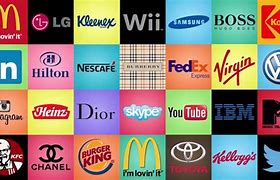Introduction
In the dynamic realm of the hospitality industry, establishing a robust presence on social media platforms has become more than just a marketing strategy—it’s a necessity. In today’s digital age, potential guests turn to social media to not only seek out their next dining experience or vacation spot but also to connect, engage, and express their opinions. However, the pursuit of a 24/7 social media presence poses unique challenges for hospitality businesses.
Firstly, the demand for real-time responses means businesses must be ever-vigilant, ready to engage with customers across different time zones and cultural contexts. Secondly, maintaining consistency in brand messaging and customer interaction, while juggling various social media channels, requires careful orchestration. Furthermore, the risk of negative reviews going viral and impacting reputation is ever-present, necessitating a delicate balance between authenticity and professional image.
Additionally, the hospitality industry’s reliance on visual appeal places immense importance on high-quality content creation, demanding both creativity and technical prowess. Lastly, the fast-paced nature of social media trends requires businesses to adapt swiftly and stay relevant.
Navigating these challenges calls for a strategic approach, a keen understanding of the risks involved, and a commitment to customer satisfaction. In the following table, we outline the potential risks associated with 24/7 social media presence in the hospitality sector and provide valuable advice to mitigate these challenges effectively.
Being aware of the challenges is already a part of the solution
| Social Media | Challenges | Potential Consequences | Solutions |
|---|---|---|---|
| Negative Impact: Negative reviews, comments, or posts can harm the business’s reputation. | Consequences: Loss of credibility, reduced customer trust, and potential decline in customer base. | Solutions: Monitor the page regularly, respond promptly and professionally to negative comments. Address concerns publicly and offer to resolve issues privately. Encourage satisfied customers to leave positive reviews to counterbalance negativity. | |
| Negative Impact: Inaccurate representation due to heavily curated content; negative comments or feedback in the comment section. | Consequences: Discrepancy between customer expectations and reality, leading to disappointment and potential negative reviews. | Solutions: Balance curated content with genuine, behind-the-scenes glimpses. Address negative comments diplomatically. Be transparent about offerings and services. Encourage user-generated content to provide authentic perspectives. | |
| Negative Impact: Inappropriate or unprofessional content, negative discussions in professional groups, or poor engagement with industry peers. | Consequences: Damage to the business’s professional reputation, potential partnership rejections, and reduced networking opportunities. | Solutions: Maintain a professional tone in all posts and interactions. Participate actively in relevant industry groups, showcasing expertise. Address conflicts privately and professionally. Encourage employees to engage positively to enhance the company’s professional image. | |
| Negative Impact: Negative tweets, trending hashtags, or viral complaints about the business. | Consequences: Rapid spread of negativity, potential public relations crisis, and damage to brand image. | Solutions: Address complaints publicly, acknowledging the issue and showing willingness to resolve. Use direct messaging for private follow-up. Monitor trending hashtags related to the business and respond appropriately if necessary. Proactively engage with positive hashtags to boost brand image. | |
| YouTube | Negative Impact: Negative comments on videos, low-quality video content, or lack of engagement with viewers. | Consequences: Reduced credibility, decreased viewership, and negative impact on brand perception. | Solutions: Moderate comments to filter out negativity. Invest in high-quality video production to enhance professionalism. Engage with viewers by responding to comments and encouraging discussions. Create informative and entertaining content to maintain viewer interest. Encourage viewers to like, share, and subscribe to boost visibility and positive engagement. |





